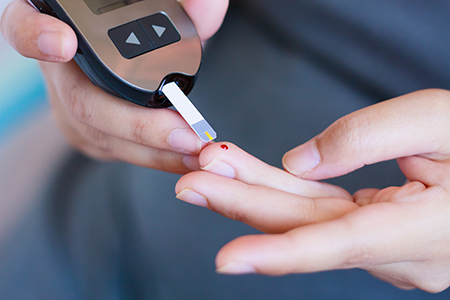London: University of Cambridge engineers has developed a computer vision technology into a free mobile phone app for regular monitoring of glucose levels in people with diabetes.
The app uses computer vision techniques to read and record the glucose levels, time and date displayed on a typical glucose test via the camera on a mobile phone.
The technology, which doesn’t require an internet or Bluetooth connection, works for any type of glucose meter, in any orientation and in a variety of light levels.
It also reduces waste by eliminating the need to replace high-quality non-Bluetooth meters, making it a cost-effective solution to the National Health Service (NHS).
Working with UK glucose testing company GlucoRx, the Cambridge researchers developed the technology into a free mobile phone app called GlucoRx Vision, which is now available on the Apple App Store and Google Play Store.
To use the app, users simply take a picture of their glucose meter and the results are automatically read and recorded, allowing much easier monitoring of blood glucose levels.
In addition to the glucose meters, many other types of digital meters are used in the medical and industrial sectors.
“These meters work perfectly well, so we don’t want them sent to landfill just because they don’t have wireless connectivity,” said Dr James Charles from Cambridge’s Department of Engineering.
“We wanted to find a way to retrofit them in an inexpensive and environmentally-friendly way using a mobile phone app”.
The computer vision technology behind the GlucoRx app is made up of two steps.
First, the screen of the glucose meter is detected.
The researchers used a single training image and augmented it with random backgrounds, particularly backgrounds with people.
This helps ensure the system is robust when the user’s face is reflected in the phone’s screen.
Second, a neural network called LeDigit detects each digit on the screen and reads it.
The network is trained with computer-generated synthetic data, avoiding the need for labour-intensive labelling of data which is commonly needed to train a neural network.
“Since the font on these meters is digital, it’s easy to train the neural network to recognise lots of different inputs and synthesise the data,” said Charles. “This makes it highly efficient to run on a mobile phone.”
In addition to blood glucose monitor, the researchers also tested their system on different types of digital meters, such as blood pressure monitors, kitchen and bathroom scales.
The researchers recently presented their results at the 31st British Machine Vision Conference.
IANS
